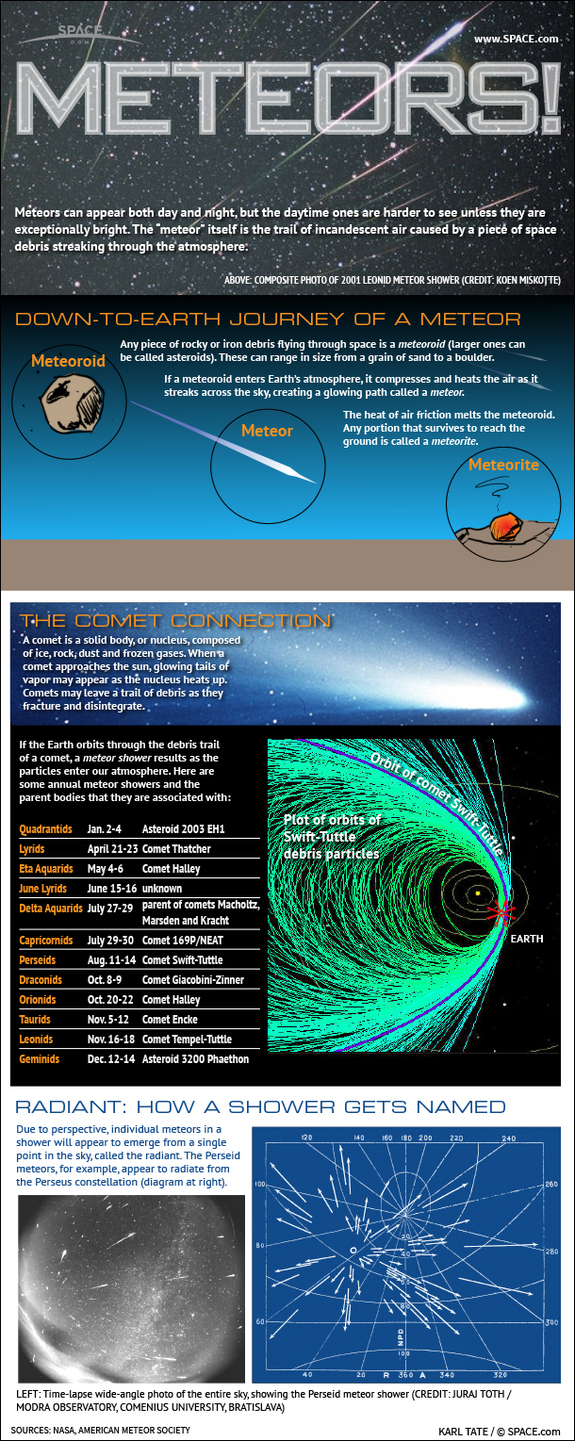aNewDomain.net — Check out the awesome How Meteor Showers Work infographic below. It’s the right time for it. The Perseid Meteor Shower 2013 — August 11 through 17 — is lighting up the sky now.
You might have noticed that the Perseid meteors appear to emerge from a single point — that’s the Perseus constellation. But it’s in reality associated with the Swift-Tuttle Comet. All meteor showers have parent associations with comets and asteroids.
Try to catch the Perseid meteor showers at their peak from Aug. 11 to 14. If the brightness of the moon or summer fog dimmed your view of the spectacular Perseids — we were able to see them here in the midwest region of the U.S. — stay tuned for the Draconids in October (via Comet Giacobini-Zinner) or the Orionids later that same month (Comet Halley). In November, watch for the Taurids (Comet Encke) and the Leonids (Comet Tempel-Tuttle). And in mid-December, from Dec. 12 to 14, get ready for the Geminids (Asteroid 3200 Phaethon).
Here’s everything you need to know about the Perseid Meteor Shower 2013. Here’s where to watch — a great listing if you live near a major United States city. And check out the livestream of the Perseids at NASA TV and at UK Meteor Watch.
Based in Silicon Valley, Joy Ma is a long-time tech journalist and startup veteran. She currently serves as aNewDomain.net’s executive editor. Email her at: joy@anewdomain.net













